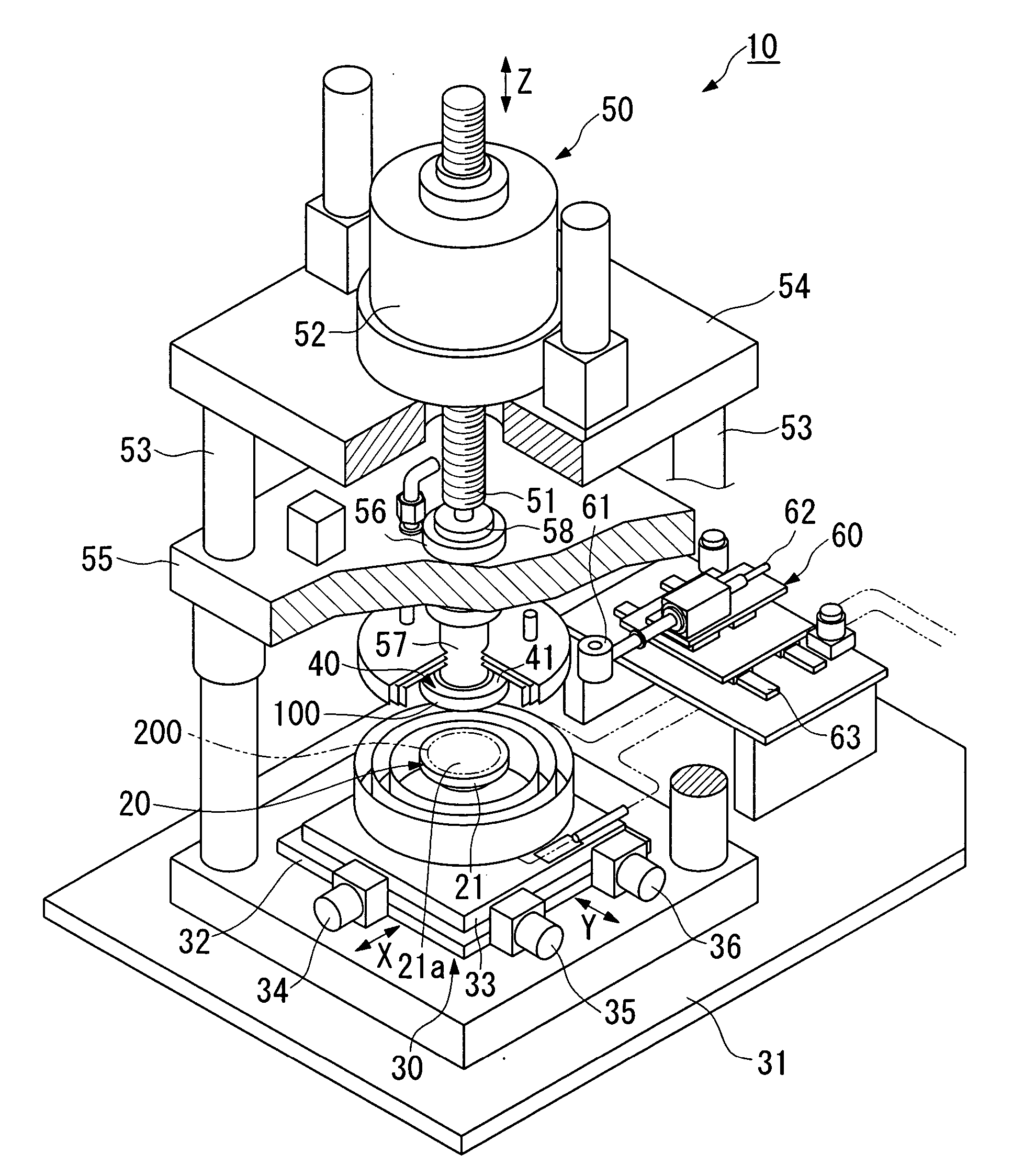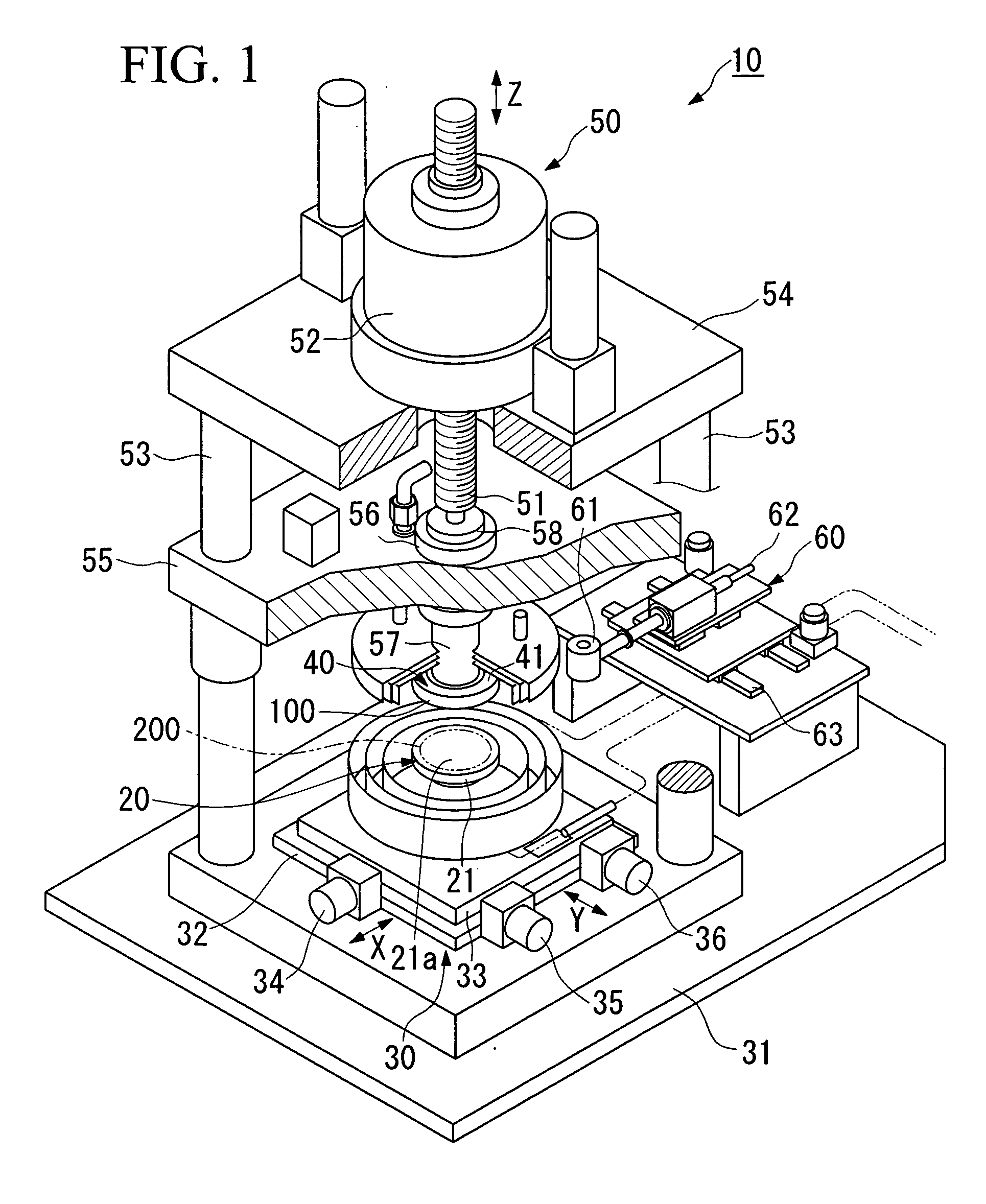Device, method, and system for pattern forming
a technology of pattern formation and pattern, applied in the field of pattern formation, can solve the problems of high price of the reduced projection exposure device constituted by a series of such devices, light source noise, distortion, etc., and achieve the effect of improving efficiency
- Summary
- Abstract
- Description
- Claims
- Application Information
AI Technical Summary
Benefits of technology
Problems solved by technology
Method used
Image
Examples
Embodiment Construction
[0055] This invention will be described in detail below based on embodiments shown in the accompanying drawings.
[0056]FIG. 1 is a view for explaining the general configuration of a pattern formation device in this embodiment.
[0057] As shown in FIG. 1, a pattern formation device 10 transfers a mold 100 having a predetermined pattern formed by projections and depressions onto a substrate (processing object) 200 to form the pattern on the substrate 200.
[0058] The pattern formation device 10 comprises a substrate holding unit 20 holding the substrate 200 to be processed, a movement mechanism 30 moving the substrate holding unit 20 in a two-dimensional direction, a mold holding unit 40 holding the mold 100 for forming a predetermined pattern on the substrate 200, a mold driving mechanism (press mechanism) 50 drive the mold 100 held by the mold holding unit 40, and an alignment mechanism 60 for determining the relative position between the substrate 200 and the mold 100.
[0059] As show...
PUM
| Property | Measurement | Unit |
|---|---|---|
| width | aaaaa | aaaaa |
| width | aaaaa | aaaaa |
| width | aaaaa | aaaaa |
Abstract
Description
Claims
Application Information
 Login to View More
Login to View More - R&D
- Intellectual Property
- Life Sciences
- Materials
- Tech Scout
- Unparalleled Data Quality
- Higher Quality Content
- 60% Fewer Hallucinations
Browse by: Latest US Patents, China's latest patents, Technical Efficacy Thesaurus, Application Domain, Technology Topic, Popular Technical Reports.
© 2025 PatSnap. All rights reserved.Legal|Privacy policy|Modern Slavery Act Transparency Statement|Sitemap|About US| Contact US: help@patsnap.com



